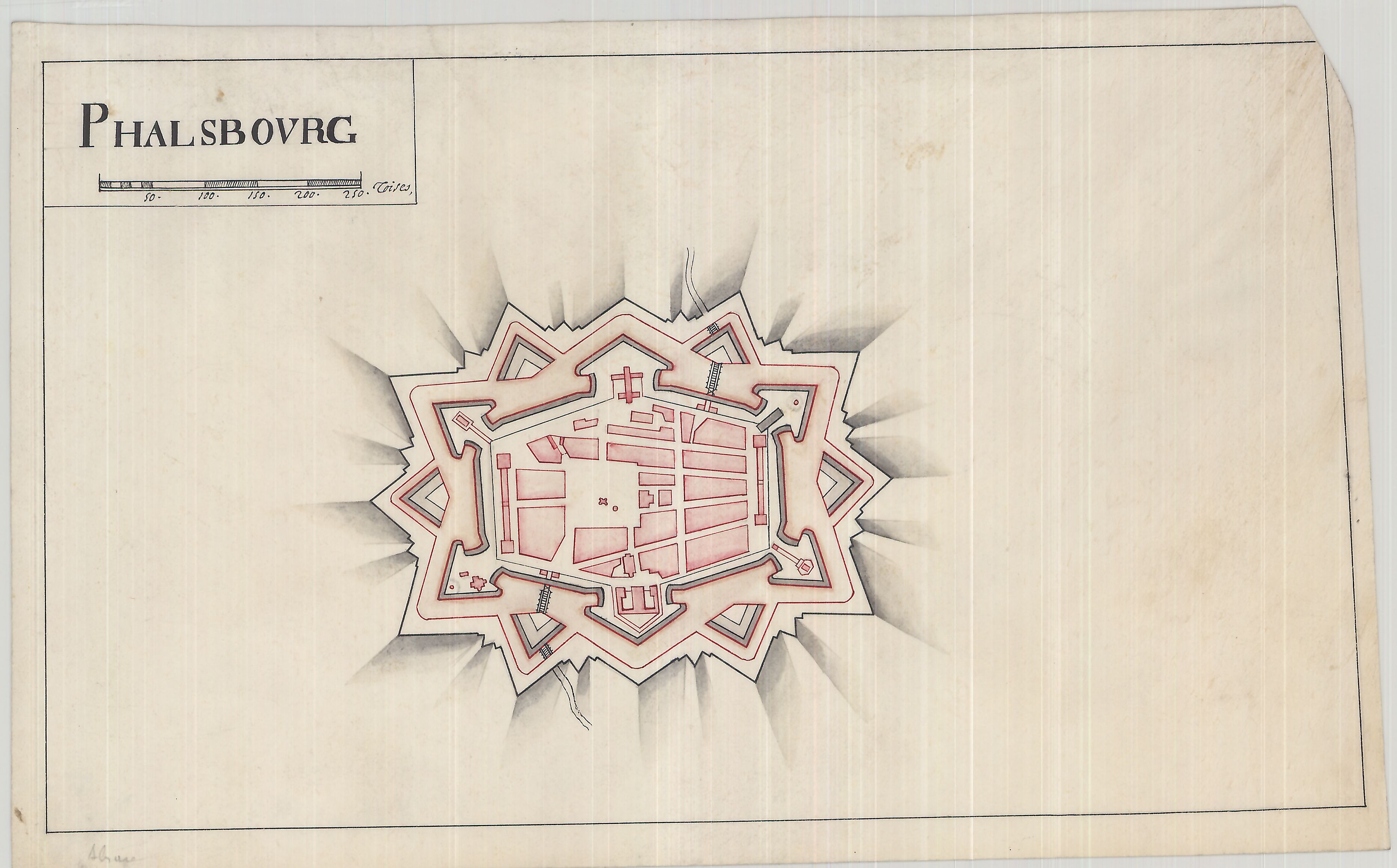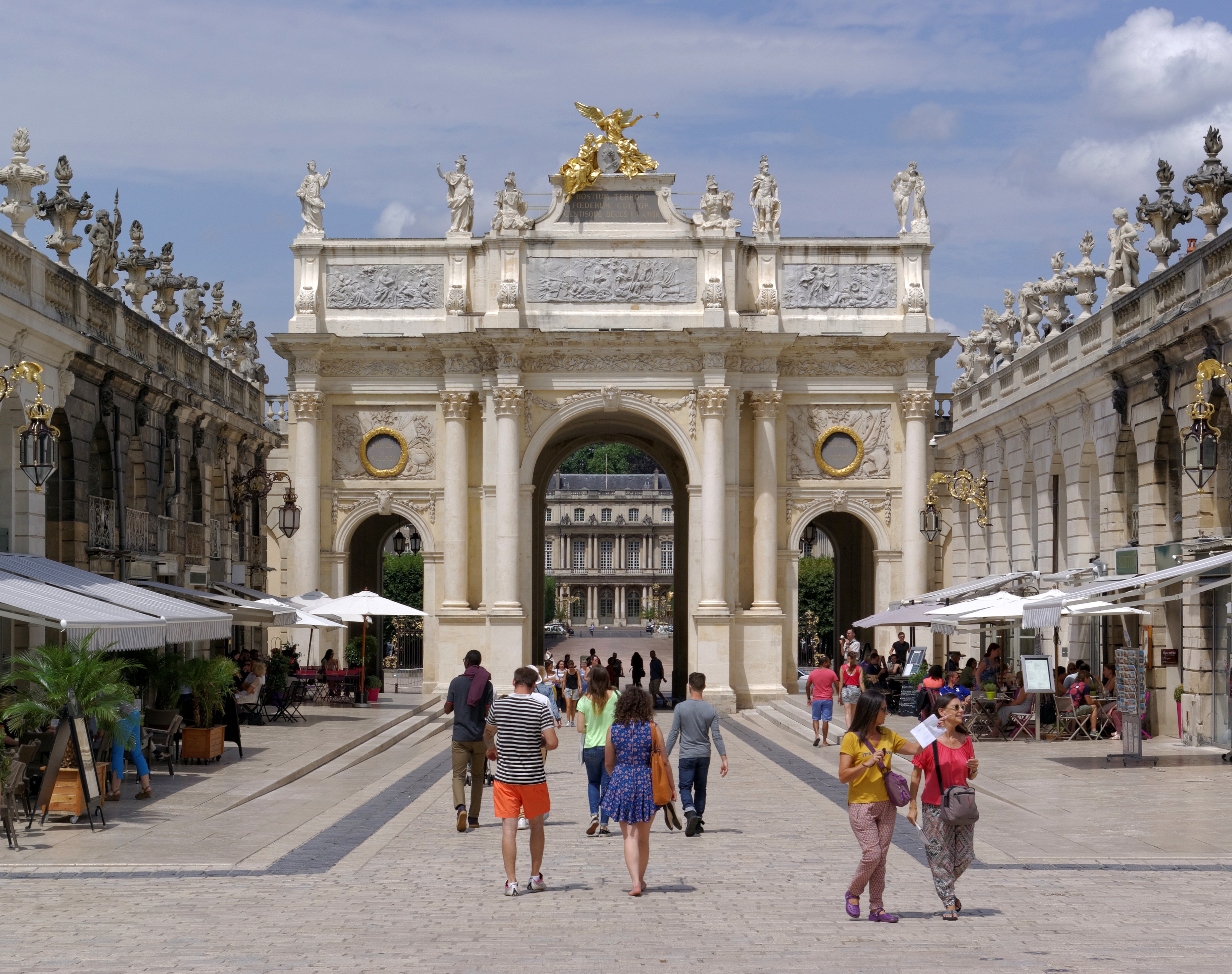|
Abreschviller
Abreschviller (; german: Alberschweiler) is a commune in the Moselle department in Grand Est in northeastern France. Geography Abreschviller is a small, long-drawn-out, village in the Vosges mountains, surrounded by vast forests. It is located 15 kilometers south of Sarrebourg, and 25 kilometers from Phalsbourg, at the border between Lorraine and Alsace. The village is crossed by the Red Saar. The highest point of the commune is the Grossmann forest house at 968 meters above sea level. History The origin of this village is rather recent. However this location was populated since the Antiquity. In 1660, there were only 48 houses there. The counts of Dabo (or Dachsbourg), with the concessions they granted them, the rights to exploit the forests of their domain, attracted French families who built houses on the banks of the Red Saar and populated Abreschviller gradually. In the course of the 17th and 18th centuries, fifteen sawmills and two paper mills were built on the vi ... [...More Info...] [...Related Items...] OR: [Wikipedia] [Google] [Baidu] |
Sarrebourg
Sarrebourg (; also , ; Lorraine Franconian: ; older la, Pons Saravi) is a commune of northeastern France. In 1895 a Mithraeum was discovered at Sarrebourg at the mouth of the pass leading from the Vosges Mountains. Geography Sarrebourg is located in the department of Moselle, Lorraine, administrative region of Grand Est. It lies in on the upper course of the river Saar. The Vosges mountains are located about 10 kilometers south of the locality. To the northwest, the Oberwald forest massif - where the state forest of the municipality is located. It is 54 km away from Strasbourg, 64 km from Nancy, 77 km from Metz and 345 km from Paris ( orthodromic distance). The lines of communication and transport Sarrebourg station has rail connections to Paris, Strasbourg, Metz and Nancy. The commune is on the route of the Route nationale 4. Sarrebourg is the departure point of several departmental roads: D 27 to Morhange, D 43 to Sarre-Union, D 44 to Le Donon ... [...More Info...] [...Related Items...] OR: [Wikipedia] [Google] [Baidu] |
Alexandre Chatrian
Alexandre Chatrian (18 December 1826 – 3 September 1890) was a French writer, associated with the region of Alsace-Lorraine. Almost all of his works were written jointly with Émile Erckmann under the name Erckmann-Chatrian. Life Youth He was born at Abreschviller (Moselle), in the locality known as ''le Grand Soldat'' (or ''Soldatenthal'' in German). From 1842 he studied in Phalsbourg (German Pfalzburg). During 1843 his father's glassworks went bankrupt, and the next year he went to Belgium for two years to earn a living as an accountant, after which he returned to Phalsbourg as a teacher. He met Erckmann in 1847, and they became friends, spending the summer in the Vosges. While staying at Paris, Erckmann witnessed the Revolution of 1848: inspired, they founded a political ''club'' at Phalsbourg and a short-lived newsletter at Strasbourg. Their politics were republican and nationalist. At the start of the 1850s they began publishing in ''Le Démocrate du Rhin'', expecting ... [...More Info...] [...Related Items...] OR: [Wikipedia] [Google] [Baidu] |
Communes Of The Moselle Department
The following is a list of the 725 Communes of France, communes of the Moselle (department), Moselle Departments of France, department of France. The communes cooperate in the following Communes of France#Intercommunality, intercommunalities (as of 2020):BANATIC Périmètre des EPCI à fiscalité propre. Accessed 3 July 2020. *Metz Métropole *Communauté d'agglomération de Forbach Porte de France *Communauté d'agglomération Portes de France-Thionville *Communauté d'agglomération Saint-Avold Synergie *Communauté d'agglomération Sarreguemines Confluences (partly) *Communauté d'agglomération du Val de Fensch *Communauté de communes de l'Arc Mosellan *Communauté de communes Bouzonvillois - Trois Frontières *Communauté de communes de Cattenom et environs *Communauté de communes du District U ... [...More Info...] [...Related Items...] OR: [Wikipedia] [Google] [Baidu] |
Communes Of France
The () is a level of administrative division in the French Republic. French are analogous to civil townships and incorporated municipalities in the United States and Canada, ' in Germany, ' in Italy, or ' in Spain. The United Kingdom's equivalent are civil parishes, although some areas, particularly urban areas, are unparished. are based on historical geographic communities or villages and are vested with significant powers to manage the populations and land of the geographic area covered. The are the fourth-level administrative divisions of France. vary widely in size and area, from large sprawling cities with millions of inhabitants like Paris, to small hamlets with only a handful of inhabitants. typically are based on pre-existing villages and facilitate local governance. All have names, but not all named geographic areas or groups of people residing together are ( or ), the difference residing in the lack of administrative powers. Except for the municipal arrondi ... [...More Info...] [...Related Items...] OR: [Wikipedia] [Google] [Baidu] |
Moselle (department)
Moselle () is the most populous department in Lorraine, in the east of France, and is named after the river Moselle, a tributary of the Rhine, which flows through the western part of the department. It had a population of 1,046,543 in 2019.Populations légales 2019: 57 Moselle INSEE Inhabitants of the department are known as ''Mosellans''. History 
 On March 4, 1790, Moselle became one of th ...
On March 4, 1790, Moselle became one of th ...
[...More Info...] [...Related Items...] OR: [Wikipedia] [Google] [Baidu] |
Departments Of France
In the administrative divisions of France, the department (french: département, ) is one of the three levels of government under the national level ("territorial collectivities"), between the administrative regions and the communes. Ninety-six departments are in metropolitan France, and five are overseas departments, which are also classified as overseas regions. Departments are further subdivided into 332 arrondissements, and these are divided into cantons. The last two levels of government have no autonomy; they are the basis of local organisation of police, fire departments and, sometimes, administration of elections. Each department is administered by an elected body called a departmental council ( ing. lur.. From 1800 to April 2015, these were called general councils ( ing. lur.. Each council has a president. Their main areas of responsibility include the management of a number of social and welfare allowances, of junior high school () buildings and technical staff, ... [...More Info...] [...Related Items...] OR: [Wikipedia] [Google] [Baidu] |
Grand Est
Grand Est (; gsw-FR, Grossa Oschta; Moselle Franconian/ lb, Grouss Osten; Rhine Franconian: ''Groß Oschte''; german: Großer Osten ; en, "Great East") is an administrative region in Northeastern France. It superseded three former administrative regions, Alsace, Champagne-Ardenne and Lorraine, on 1 January 2016 under the provisional name of Alsace-Champagne-Ardenne-Lorraine (; ACAL or, less commonly, ALCA), as a result of territorial reform which had been passed by the French Parliament in 2014. The region sits astride three water basins (Seine, Meuse and Rhine), spanning an area of , the fifth largest in France; it includes two mountain ranges (Vosges and Ardennes). It shares borders with Belgium, Luxembourg, Germany and Switzerland. As of 2017, it had a population of 5,549,586 inhabitants. The prefecture and largest city, by far, is Strasbourg. The East of France has a rich and diverse culture, being situated at a crossroads between the Latin and Germanic worlds. This hi ... [...More Info...] [...Related Items...] OR: [Wikipedia] [Google] [Baidu] |
France
France (), officially the French Republic ( ), is a country primarily located in Western Europe. It also comprises of Overseas France, overseas regions and territories in the Americas and the Atlantic Ocean, Atlantic, Pacific Ocean, Pacific and Indian Oceans. Its Metropolitan France, metropolitan area extends from the Rhine to the Atlantic Ocean and from the Mediterranean Sea to the English Channel and the North Sea; overseas territories include French Guiana in South America, Saint Pierre and Miquelon in the North Atlantic, the French West Indies, and many islands in Oceania and the Indian Ocean. Due to its several coastal territories, France has the largest exclusive economic zone in the world. France borders Belgium, Luxembourg, Germany, Switzerland, Monaco, Italy, Andorra, and Spain in continental Europe, as well as the Kingdom of the Netherlands, Netherlands, Suriname, and Brazil in the Americas via its overseas territories in French Guiana and Saint Martin (island), ... [...More Info...] [...Related Items...] OR: [Wikipedia] [Google] [Baidu] |
Vosges
The Vosges ( , ; german: Vogesen ; Franconian and gsw, Vogese) are a range of low mountains in Eastern France, near its border with Germany. Together with the Palatine Forest to the north on the German side of the border, they form a single geomorphological unit and low mountain range of around in area. It runs in a north-northeast direction from the Burgundian Gate (the Belfort–Ronchamp– Lure line) to the Börrstadt Basin (the Winnweiler– Börrstadt–Göllheim line), and forms the western boundary of the Upper Rhine Plain. The Grand Ballon is the highest peak at , followed by the Storkenkopf (), and the Hohneck ().IGN maps available oGéoportail/ref> Geography Geographically, the Vosges Mountains are wholly in France, far above the Col de Saverne separating them from the Palatinate Forest in Germany. The latter area logically continues the same Vosges geologic structure but traditionally receives this different name for historical and political reasons. From ... [...More Info...] [...Related Items...] OR: [Wikipedia] [Google] [Baidu] |
Phalsbourg
Phalsbourg (; ; Lorraine Franconian: ''Phalsburch'') is a commune in the Moselle department in Grand Est in north-eastern France, with a population of about 5,000. It lies high on the west slopes of the Vosges, northwest of Strasbourg by rail. In 1911, it contained an Evangelical and a Roman Catholic church, a synagogue and a teachers' seminary. Its industries then included the manufacture of gloves, straw hats and liqueurs, and quarrying. History The area of the city of Phalsbourg, originally Pfalzburg, was originally part of the principality of Lützelstein, under the overlordship of Luxembourg, then the bishops of Metz and of Strasbourg, before becoming possessed by the Dukes of Palantine Veldenz, all within the Holy Roman Empire of the German Nation. In 1570, Duke Georg Johann I of Palantine Veldenz founded the town of Pfalzburg as a refuge for Reformed Protestants expelled from of the Duchy of Lorraine, and as an administrative center of his holdings. But the cost forced ... [...More Info...] [...Related Items...] OR: [Wikipedia] [Google] [Baidu] |
Lorraine
Lorraine , also , , ; Lorrain: ''Louréne''; Lorraine Franconian: ''Lottringe''; german: Lothringen ; lb, Loutrengen; nl, Lotharingen is a cultural and historical region in Northeastern France, now located in the administrative region of Grand Est. Its name stems from the medieval kingdom of Lotharingia, which in turn was named after either Emperor Lothair I or King Lothair II. Lorraine later was ruled as the Duchy of Lorraine before the Kingdom of France annexed it in 1766. From 1982 until January 2016, Lorraine was an administrative region of France. In 2016, under a reorganisation, it became part of the new region Grand Est. As a region in modern France, Lorraine consisted of the four departments Meurthe-et-Moselle, Meuse, Moselle and Vosges (from a historical point of view the Haute-Marne department is located in the region), containing 2,337 communes. Metz is the regional prefecture. The largest metropolitan area of Lorraine is Nancy, which had developed for centu ... [...More Info...] [...Related Items...] OR: [Wikipedia] [Google] [Baidu] |



